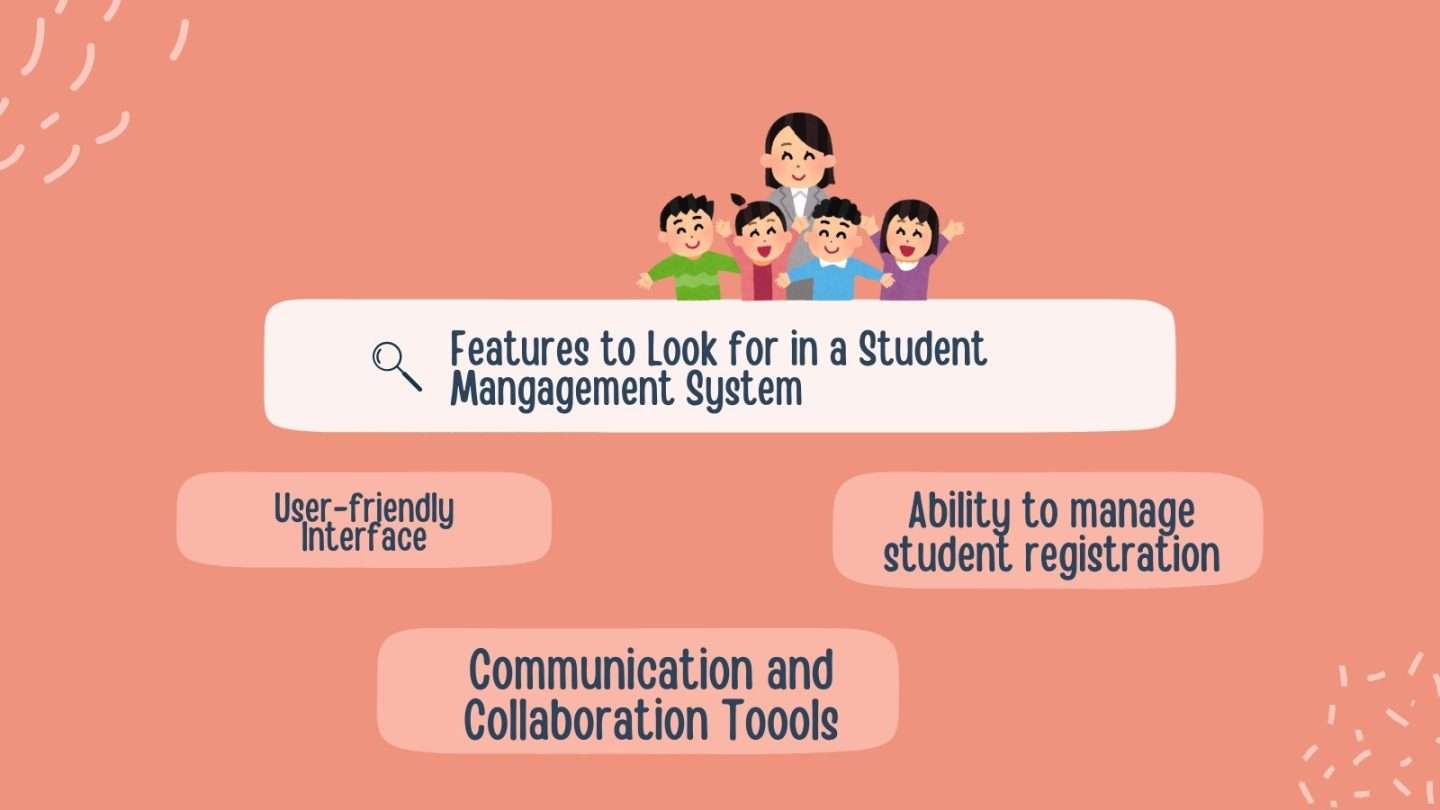Are you a teacher or school administrator looking for an efficient way to manage your students? Look no further! This comprehensive guide will explore the benefits and features of using a Student Management System to streamline administrative tasks and improve communication with students and parents.
A Student Management System is a powerful tool that simplifies the management of student information, attendance records, timetables, grades, and more. With its user-friendly interface and robust functionality, this system enables you to easily access and update student data, saving you valuable time and effort.
Not only does a Student Management System provide administrative support, but it also enhances student engagement and parent involvement. Through this system, you can effortlessly communicate with parents, provide real-time updates on student progress, and facilitate a collaborative learning environment.
With our step-by-step guide, you will learn how to effectively implement and utilize a Student Management System, maximizing its benefits for your educational institution. Discover the ultimate solution to efficiently manage your students and revolutionize your school’s administrative processes.
Benefits of using a student management system(SMS)

In the modern era of education, managing student data and administrative tasks can be a daunting challenge for teachers and school administrators. However, the implementation of a robust Student Management System (SMS) can revolutionize the way you handle these responsibilities. By utilizing an SMS, you can unlock a myriad of benefits that streamline your school’s operations and enhance the overall educational experience.
One of the primary advantages of a Student Management System is the centralization of student information. Instead of juggling multiple spreadsheets, paper records, and disparate databases, an SMS consolidates all student data into a single, organized platform. This allows you to easily access and update student profiles, including their details, academic records, and contact information, with just a few clicks. This level of organization not only saves time but also reduces the risk of data inconsistencies or loss.
Furthermore, a well-designed Student Management System offers advanced reporting and data analytics capabilities. With the ability to generate comprehensive reports on student attendance, grades, and overall performance, you can gain valuable insights into your institution’s strengths and areas for improvement. This data-driven approach empowers you to make informed decisions, identify trends, and implement targeted interventions to support student success. By leveraging the analytical tools provided by an SMS, you can make data-driven decisions that positively impact your school’s educational outcomes.
Features to look for in an SMS

When selecting a Student Management System for your educational institution, it is crucial to prioritize features that align with your specific needs and goals. A comprehensive SMS should offer a wide range of functionalities to streamline various administrative tasks and enhance the overall user experience.
One essential feature to look for is a user-friendly interface that facilitates seamless navigation and data entry. The system should be intuitive and easy to use, allowing teachers, administrators, and even students to access and manage information with minimal training. A well-designed interface can significantly improve productivity and reduce the learning curve for all stakeholders.
Another key feature to consider is the system’s ability to manage student enrollment and registration processes. An effective SMS should provide a centralized platform for handling student applications, enrollment forms, and the collection of relevant documents. This streamlined approach not only saves time but also ensures the accuracy and completeness of student records, reducing the risk of errors or omissions.
Robust communication and collaboration tools are also crucial in a Student Management System. Look for features that enable you to easily share information, send notifications, and engage with students, parents, and other stakeholders. This could include features like email integration, messaging capabilities, and the ability to create custom forms and surveys. Effective communication is the cornerstone of a successful educational institution, and a well-designed SMS can facilitate seamless collaboration among all parties involved.
Implementing a student management system in your educational institution

Implementing a Student Management System in your educational institution requires careful planning and a strategic approach. To ensure a successful implementation, it is essential to follow a step-by-step process that addresses the unique needs and challenges of your school or district.
The first step in the implementation process is to conduct a thorough assessment of your current administrative practices and identify areas where a Student Management Systems can provide the most significant impact. This may involve analyzing your existing data management workflows, communication channels, and reporting requirements. By understanding your institution’s specific needs, you can select an SMS that aligns with your goals and objectives.
Once you have identified the right Student Management System for your institution, it is crucial to involve all stakeholders in the implementation process. This includes teachers, administrators, IT staff, and even students and parents. By fostering a collaborative environment, you can ensure that the system is tailored to meet the needs of all users, promoting widespread adoption and buy-in.
During the implementation phase, it is essential to provide comprehensive training and support to all users. This may include in-person workshops, online tutorials, and ongoing technical assistance to ensure that everyone is comfortable navigating the system and leveraging its full capabilities. Investing in thorough training not only enhances user proficiency but also increases the overall effectiveness of the Student Management System.
Streamlining student enrollment and registration processes
One of the key benefits of implementing a Student Management System is the ability to streamline the student enrollment and registration processes. By digitizing and centralizing these administrative tasks, you can improve efficiency, reduce errors, and provide a seamless experience for both prospective and current students.
A well-designed SMS should offer a user-friendly online portal where students and parents can easily submit applications, upload required documents, and complete the registration process. This eliminates the need for paper-based forms and manual data entry, saving valuable time and resources. Furthermore, the system can automatically validate the information provided, ensuring that all necessary fields are completed and that the data is accurate and consistent.
Another important aspect of streamlining the enrollment and registration processes is the ability to manage student records efficiently. A robust SMS should provide a centralized database that stores all student information, including contact details, academic history, and any relevant documentation. This comprehensive data repository allows you to quickly access and update student records as needed, reducing the risk of information loss or duplication.
Additionally, a Student Management System can automate various administrative tasks related to enrollment and registration, such as generating student ID numbers, assigning class schedules, and managing waitlists. By automating these repetitive tasks, you can free up your staff to focus on more strategic initiatives, enhancing the overall efficiency of your institution’s operations.
Managing student attendance and grades with an SMS
Effective management of student attendance and grades is a crucial aspect of any educational institution, and a well-designed Student Management System can significantly streamline these processes. By integrating attendance tracking and grade management functionalities, an SMS can provide a comprehensive solution for monitoring student performance and progress.
When it comes to attendance tracking, a Student Management System can automate the process of recording and monitoring student presence. Teachers can quickly and easily mark attendance during each class, and the system can generate detailed reports on individual student attendance or class-wide trends. This data can be invaluable in identifying patterns, addressing attendance issues, and ensuring that students are actively engaged in their education.
Regarding grade management, a Student Management System should offer a centralized platform for teachers to input, track, and analyze student grades. This eliminates the need for manual record-keeping and reduces the risk of data entry errors. Teachers can quickly and easily input assignment scores, test results, and other assessments, and the system can automatically calculate and display student grades in real time.
Furthermore, a Student Management System can provide advanced analytics and reporting capabilities related to student performance. Educators can generate comprehensive reports on individual student progress, class averages, and overall academic trends. This data-driven approach empowers teachers to identify areas for improvement, implement targeted interventions, and ensure that each student is receiving the support they need to succeed.
Communication and collaboration features of SMS

Effective communication and collaboration are essential elements of a successful educational institution, and a well-designed Student Management System can play a crucial role in facilitating these processes. By incorporating robust communication and collaboration features, an SMS can enhance the overall engagement and interaction among students, teachers, and parents.
One of the key communication features of a Student Management System is the ability to send targeted notifications and updates to stakeholders. This can include automated email or text message alerts for important deadlines, upcoming events, or changes in student performance. By keeping all parties informed promptly, you can promote transparency, foster engagement, and ensure that everyone is on the same page.
In addition to one-way communication, a Student Management System should also offer collaborative tools that enable seamless interaction and information sharing. This may include features like discussion forums, where teachers and students can engage in meaningful dialogue, as well as the ability to create and share digital content, such as lesson plans, assignments, and study materials. By facilitating collaborative learning experiences, you can enhance student engagement and encourage active participation in the educational process.
Furthermore, a robust SMS should provide secure and user-friendly portals for parents to access their child’s academic information, including grades, attendance records, and any relevant communication from the school. This level of transparency and accessibility can significantly improve parent-teacher collaboration, as parents can stay informed about their child’s progress and actively support their educational journey.
Tracking student progress and performance

Monitoring student progress and performance is a critical aspect of any educational institution, and a well-designed Student Management System can provide invaluable tools to support this process. By leveraging the data-driven capabilities of an SMS, you can gain deep insights into student performance, identify areas for improvement, and implement targeted interventions to ensure academic success.
One of the key features of a Student Management System is the ability to track and analyze student performance data. This includes the ability to monitor individual student grades, test scores, assignment completion rates, and other relevant metrics. By consolidating this information in a centralized platform, teachers and administrators can easily identify patterns, trends, and areas of concern, allowing them to tailor their instructional approaches and provide personalized support to struggling students.
In addition to tracking individual student performance, a robust SMS should also offer comprehensive reporting and analytics tools. These features enable you to generate detailed reports on class-wide or school-wide academic performance, allowing you to identify areas for improvement and make data-driven decisions. Whether it’s analyzing grade distributions, identifying achievement gaps, or monitoring progress toward learning goals, the reporting capabilities of a Student Management System can be invaluable in driving continuous improvement within your educational institution.
Furthermore, a well-designed SMS should provide tools for setting and tracking student learning objectives and goals. By establishing clear targets and milestones, you can empower students to take an active role in their academic development, fostering a sense of ownership and accountability. The system can then monitor student progress towards these goals, generating alerts and notifications when intervention or support is needed.
Integrating an SMS with other educational tools and systems
In the modern educational landscape, a Student Management System does not operate in isolation; it should seamlessly integrate with a variety of other tools and systems to create a cohesive and efficient ecosystem. By leveraging these integrations, you can maximize the benefits of your SMS and streamline the overall management of your educational institution.
One key integration to consider is the ability to connect your Student Management System with your school’s learning management system (LMS). By integrating these two platforms, you can create a seamless learning experience for students, where they can access course materials, submit assignments, and communicate with teachers all within a single, unified interface. This level of integration can enhance student engagement, improve collaboration, and simplify the administrative tasks associated with course management.
Another important integration to explore is the ability to connect your SMS with financial management systems, such as accounting software or payment gateways. This integration can streamline the collection of tuition fees, manage scholarship and financial aid programs, and generate detailed financial reports. By automating these financial processes, you can free up valuable time and resources, allowing your staff to focus on more strategic initiatives.
Additionally, a Student Management System should be able to integrate with other educational tools and systems, such as student information systems, student information portals, and data analytics platforms. These integrations can provide a comprehensive view of student data, enabling you to make more informed decisions, identify trends, and implement data-driven strategies to support student success.
Conclusion: Maximizing efficiency with a student management system
In conclusion, implementing a robust Student Management System can be a game-changer for educational institutions of all sizes. By streamlining administrative tasks, enhancing communication and collaboration, and providing data-driven insights, an SMS can revolutionize the way you manage your students and optimize your school’s operations.
From streamlining enrollment and registration processes to managing attendance and grades, a well-designed Student Management System offers a comprehensive solution that addresses the diverse needs of teachers, administrators, students, and parents. By leveraging the powerful features and integrations of an SMS, you can free up valuable time and resources, allowing you to focus on delivering high-quality educational experiences and supporting student success.
As you embark on your journey to implement a Student Management System, remember to carefully assess your institution’s specific requirements, involve all stakeholders in the process, and provide comprehensive training and support. By taking a strategic and collaborative approach, you can ensure a seamless integration of the SMS and maximize its benefits for your educational community.
Embrace the power of a Student Management System and unlock a new era of efficiency, communication, and data-driven decision-making in your school or district. Invest in the right SMS solution and watch as your administrative tasks become streamlined, your communication with students and parents flourishes, and your institution’s academic performance reaches new heights.
📣Need a Student Management System that can handle student registrations and an integrated payment system? Flowclass is the answer!


